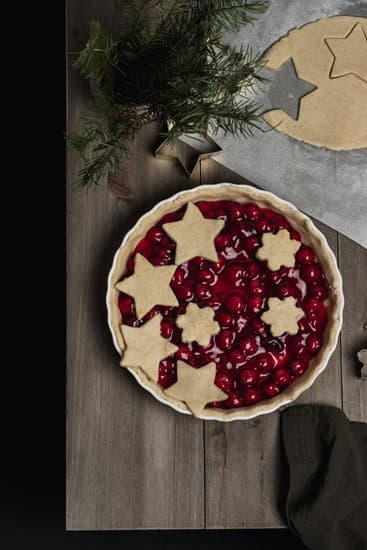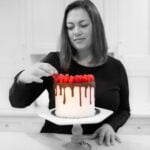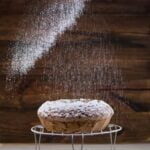Fondant cakes have become a popular choice for special occasions, from weddings to birthdays and everything in between. The ability to decorate fondant cakes opens up a world of creative possibilities for bakers and cake enthusiasts alike. Fondant offers a smooth and polished finish that traditional buttercream icing simply cannot achieve, making it a favorite among those looking for a professional and elegant touch to their baked creations.
The versatility of fondant also makes it an excellent medium for creating intricate designs, shapes, and textures on cakes. From simple floral accents to elaborate 3D sculptures, the possibilities are endless when it comes to decorating fondant cakes. Whether you’re a seasoned baker or just starting out, working with fondant allows you to bring your artistic vision to life in a delicious and visually stunning way.
As we delve into the art of decorating fondant cakes, this article will provide you with the essential knowledge and skills needed to create beautifully decorated confections. From understanding the basics of fondant to mastering advanced techniques like ruffles and hand-painted designs, you’ll find comprehensive guidance on all aspects of fondant cake decoration. So roll up your sleeves, gather your tools, and get ready to unleash your creativity as we explore the fascinating world of decorating fondant cakes.
Fondant 101
Fondant has become a popular choice for cake decorators due to its smooth and polished finish, making it perfect for creating intricate designs and decorations. This section will provide an overview of what fondant is, how it’s made, and the different types available in the world of baking.
What Is Fondant?
Fondant is a soft, pliable icing that can be rolled out and draped over cakes or used to create decorative pieces. It is commonly made from sugar, water, gelatin or agar, and glycerin. Fondant provides a versatile canvas for decorating as it can be molded, shaped, and colored into various designs.
Types of Fondant
There are two main types of fondant: rolled fondant and poured fondant. Rolled fondant is the most common type used for covering cakes and creating decorations. It has a dough-like consistency that can be rolled out with a rolling pin.
On the other hand, poured fondant is more pourable and glossy in texture, often used for filling pastries or coating petit fours. Additionally, there are commercial brands of pre-made fondants available in various colors and flavors for convenience when decorating fondant cakes.
Understanding the basics of what fondant is and the different types available lays the foundation for successfully decorating a cake with this versatile icing medium. Whether you are a beginner or seasoned baker, mastering the use of fondant opens up endless possibilities for creative cake decoration projects.
Tools and Materials Needed to Decorate Fondant Cakes
When it comes to decorating fondant cakes, having the right tools and materials is essential to ensure a successful outcome. Here is a comprehensive list of items that you will need to create stunning decorations on your fondant cake:
1. Fondant: Of course, the most important item you will need is fondant itself. You can buy pre-made fondant in various colors or make your own using marshmallows, powdered sugar, and water.
2. Rolling pin: A good quality rolling pin is necessary for rolling out the fondant to cover your cake smoothly and evenly.
3. Fondant smoother: This tool helps smooth out any wrinkles or air bubbles when covering your cake with fondant, giving it a clean and polished finish.
4. Cutting tools: Sharp knives or pizza cutters are handy for trimming excess fondant from around the base of your cake or cutting out shapes for decorations.
5. Edible glue or water: To adhere fondant pieces together or attach decorations to the cake, edible glue or simply brushed water can be used.
6. Paintbrushes: For painting details on your fondant creations or applying edible glitter or luster dust, small paintbrushes specifically designed for food use are essential.
Having these tools and materials on hand will make decorating your fondant cakes a much smoother process and allow you to let your creativity flourish as you experiment with different designs and techniques. Experimenting with new tools and materials can also enhance your decorating skills and take your fondant creations to the next level.
Step-by-Step Guide to Covering a Cake With Fondant
Covering a cake with fondant is a popular technique in the world of baking that adds a smooth, polished finish to any confection. Fondant provides a clean canvas for decoration and allows for intricate designs to be created effortlessly.
To begin decorating a fondant cake, you will need to ensure that you have all the necessary tools and materials on hand. Some of the essential items include a rolling pin, powdered sugar or cornstarch for dusting, a sharp knife or pizza cutter, and of course, your prepared fondant.
To start, it is crucial to have a perfectly baked and cooled cake ready for decorating. The surface should be level and free from crumbs or imperfections to ensure that the fondant will lay smoothly over the cake. Begin by leveling off the top of the cake if needed and then layering it with a thin coat of buttercream or ganache as an adhesive for the fondant.
Next, lightly dust your work surface with powdered sugar or cornstarch to prevent sticking as you roll out your fondant. Knead the fondant until it is pliable and smooth before rolling it into a large circle or rectangle using your rolling pin.
Carefully drape the fondant over the top of the cake, starting at one edge and gently smoothing it down over the sides as you work around the cake. Use your hands to press out any air bubbles and ensure a snug fit around the entire cake.
Once the fondant is smoothly covering the entire cake, trim away any excess using a sharp knife or pizza cutter. Be sure to work quickly but carefully to prevent tearing or stretching of the fondant. With practice and patience, covering a cake with fondant can become second nature, allowing you to create beautifully decorated cakes that are sure to impress any guest at your next celebration.
Techniques for Shaping and Molding Fondant
Fondant cakes are known for their smooth and flawless finish, making them a popular choice for special occasions and celebrations. When it comes to decorating fondant cakes, there are endless possibilities for shaping and molding this versatile medium into various designs and figures. Whether you’re a beginner or an experienced baker, mastering the art of shaping and molding fondant can take your cake decorating skills to the next level.
One creative tip for shaping fondant is to use silicone molds. These molds come in a variety of shapes and sizes, allowing you to easily create intricate designs like flowers, leaves, or even lace patterns. Simply press the fondant into the mold, then gently remove it to reveal the beautifully shaped piece.
Another technique is hand modeling, where you can sculpt fondant by hand to create custom decorations such as animals, objects, or characters. This hands-on approach allows for complete artistic freedom and personalized designs on your cakes.
When it comes to molding fondant into figures, tools like edible food markers or paints can be used to add fine details and accents. Additionally, using different textures like embossing mats or impression tools can create unique patterns on your fondant creations. Experimenting with different techniques and tools will help you enhance your skills in shaping and molding fondant, making each cake decoration project a fun and creative experience.
| Tip | Technique |
|---|---|
| Silicone Molds | Create intricate designs like flowers or lace patterns by pressing fondant into molds |
| Hand Modeling | Sculpt custom decorations like animals or characters by sculpting fondant by hand |
| Edible Food Markers/Paints | Add fine details and accents to fondant figures using edible markers or paints |
Color and Flavor Customization
When it comes to decorating a fondant cake, one of the most exciting aspects is the ability to customize the color and flavor of the fondant. This allows bakers to create personalized cakes that not only look stunning but also taste delicious. There are various ways to achieve this customization, from using pre-colored fondant to creating your own unique shades and flavors.
To start, one option for coloring fondant is to use pre-colored fondant. This can save time and effort, especially if you need a specific color that is difficult to achieve by mixing different food coloring. Pre-colored fondant comes in a wide range of shades, from vibrant reds and blues to more pastel hues like lilac and mint green. Simply knead the pre-colored fondant until it’s pliable and ready for decorating.
On the other hand, if you prefer a more hands-on approach, you can customize the color of your fondant by mixing gel food coloring into white or neutral-colored fondant. Gel food coloring is preferred over liquid food coloring as it won’t change the consistency of the fondant.
Start with a small amount of gel food coloring and knead it into the fondant gradually until you achieve your desired shade. Remember that colors may deepen over time, so allow the colored fondant to rest before using it to decorate your cake.
Another way to add personality to your decorated fondant cake is by incorporating different flavors into the fondant itself. While traditional fondants have a sweet vanilla flavor, you can experiment with adding extracts like almond, lemon, or coconut for a unique twist.
To do this, simply add a few drops of flavor extract while kneading the fondant until well incorporated. Keep in mind that certain extracts may affect the texture of the fondant, so adjust accordingly or consider using flavored syrups or oils instead for better results.
Whether it’s creating a ombre effect with different shades of colored fondants or infusing tropical flavors into your decorations, exploring different ways to color and flavor fondants opens up endless possibilities for creating personalized and visually appealing cakes for any occasion. Have fun experimenting with various combinations and techniques to elevate your next decorating project.
- Pre-colored Fondants
- Gel Food Coloring
- Flavor Extracts
- Colored Fondants
Advanced Fondant Decorating Techniques
Creating Ruffles
One of the most elegant and eye-catching decorating techniques for fondant cakes is creating beautiful ruffles. To achieve this look, you can use a tool such as a ball tool or a veining tool to thin out the edges of strips of fondant, creating a delicate and natural ruffle effect. You can layer these ruffles in different directions to create dimension and movement on your cake.
Textured Fondant Designs
Adding texture to your fondant cake can take its visual appeal to the next level. There are various ways to create textured designs on fondant, such as using embossing mats, stencils, or even everyday kitchen items like crumpled aluminum foil or lace fabric. By pressing these materials onto the fondant before applying it to the cake, you can achieve intricate patterns and textures that will make your cake stand out.
Hand-Painted Designs
For those looking to add a personal touch and artistic flair to their fondant cakes, hand-painted designs are an excellent option. Using edible food coloring paints or diluted gel food colors, you can paint intricate patterns, floral motifs, or even landscapes directly onto the fondant surface.
This technique allows for endless creativity and customization, making each decorated fondant cake a unique work of art. Experiment with different brush sizes and techniques to achieve varied effects and showcase your creativity when decorating fondant cakes.
Troubleshooting Common Fondant Decoration Issues
When decorating fondant cakes, it is not uncommon to encounter some common issues that may affect the overall look and finish of your masterpiece. These problems can range from cracking fondant to air bubbles trapped underneath the surface. However, fear not. With a few simple tricks and tips, you can quickly troubleshoot these problems and achieve a flawless finish on your decorated cake.
Here are some common fondant decoration issues you may face, along with solutions to help you overcome them:
- Cracking Fondant: Cracks in fondant can occur due to various reasons such as dry conditions or improper handling. To fix this issue, try kneading the fondant again with a touch of shortening or water to soften it. You can also gently heat the affected area with a blow dryer to help smooth out any cracks.
- Air Bubbles: Air bubbles trapped under the surface of your fondant can create unsightly bulges or wrinkles. To prevent this, roll out your fondant evenly using a rolling pin and then smooth it against the cake gently with your hands or a smoothing tool. If air bubbles still appear, use a small pin to prick them and release the air.
- Sweating Fondant: Fondant can sometimes sweat when exposed to high humidity or temperature changes, causing moisture droplets to form on its surface. To combat this issue, allow your cake to sit at room temperature for a while before serving it in a cooler environment. You can also blot excess moisture with a paper towel carefully.
By being aware of these common issues and knowing how to troubleshoot them effectively, you can ensure that your decorated fondant cake looks impeccable and professional every time. Remember, practice makes perfect, so don’t be afraid to experiment and have fun with decorating fondant cakes. Happy baking.
Conclusion
In conclusion, the art of decorating fondant cakes offers a world of creativity and endless possibilities for both seasoned bakers and beginners alike. Fondant cakes have gained immense popularity due to their versatility in design, making them the perfect canvas for intricate decorations. From covering a cake with smooth fondant to shaping and molding it into beautiful figures, the techniques discussed in this article provide a solid foundation for anyone looking to venture into the world of fondant cake decoration.
As you begin your journey in decorating fondant cakes, it is essential to have the right tools and materials on hand to ensure a smooth and successful process. The step-by-step guide provided here gives you clear instructions on how to cover a cake with fondant, while the tips on shaping and molding fondant will inspire you to create stunning designs.
Remember that practice makes perfect, so don’t be afraid to experiment with different colors, flavors, and advanced decorating techniques like ruffles and textures.
In the end, decorating fondant cakes is all about creativity, passion, and having fun in the kitchen. Whether you’re designing a cake for a special occasion or simply indulging your artistic side, let your imagination run wild as you decorate fondant cakes.
Embrace any challenges along the way as learning experiences, and soon enough, you’ll be creating show-stopping confections that not only look breathtaking but also taste delicious. So go ahead, gather your tools, roll out that fondant, and start creating edible works of art that will leave everyone amazed at your newfound skills in cake decoration.

Welcome to our cake decorating blog! My name is Destiny Flores, and I am the proud owner of a cake decorating business named Cake Karma. Our mission is to provide delicious, beautiful cakes for all occasions. We specialize in creating custom cakes that are tailored specifically to each customer’s individual needs and tastes.





